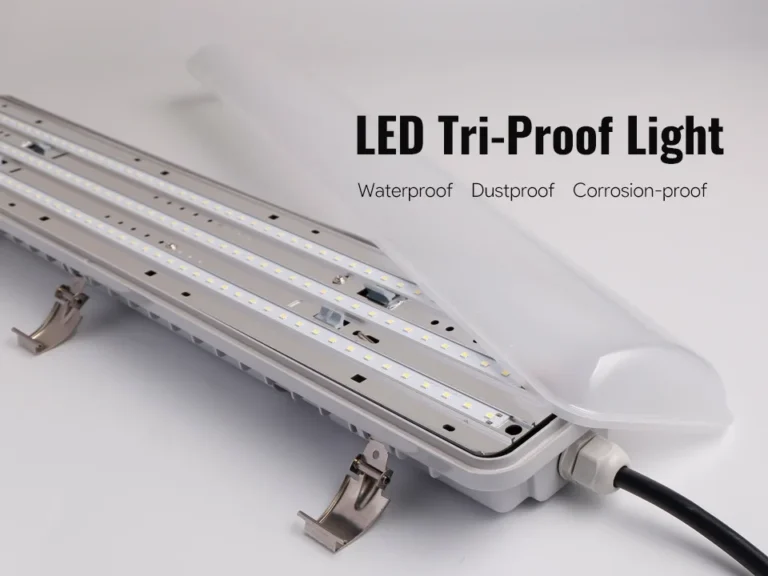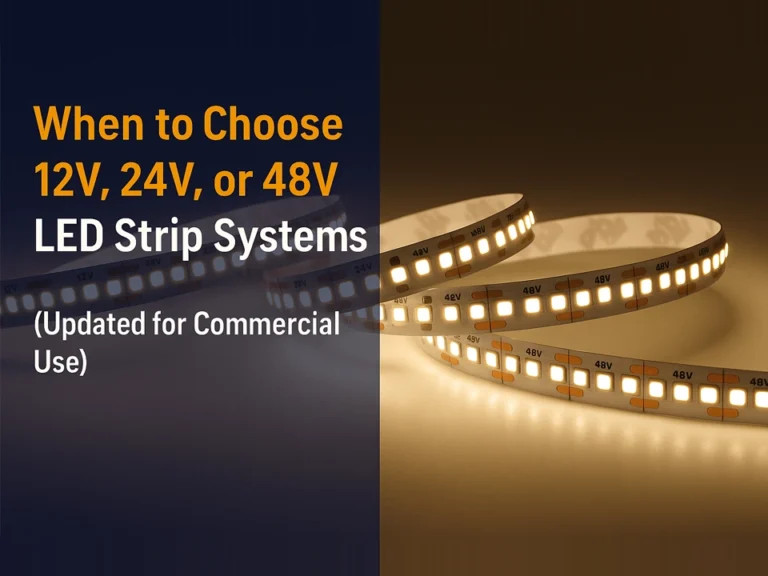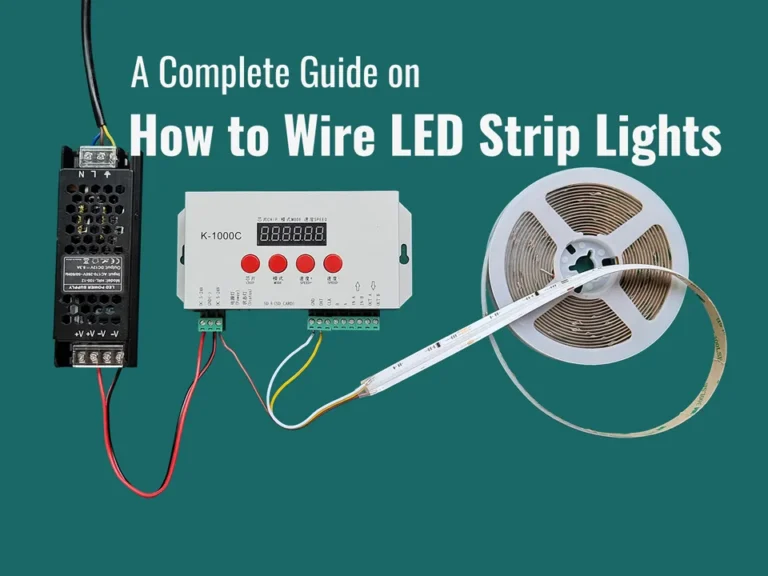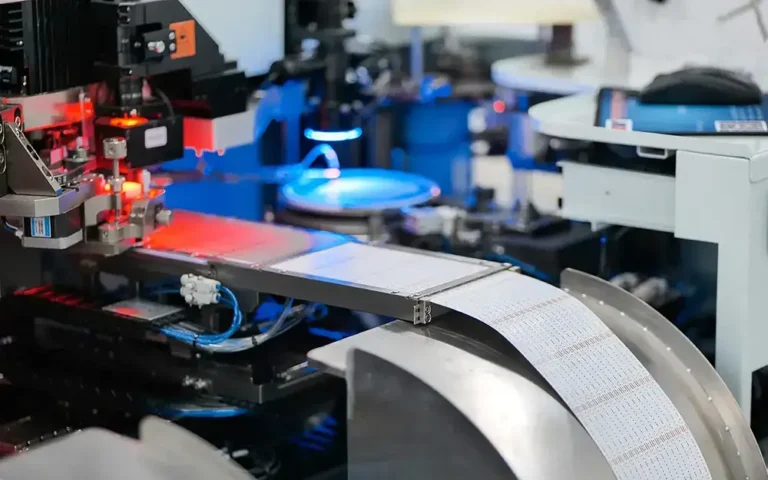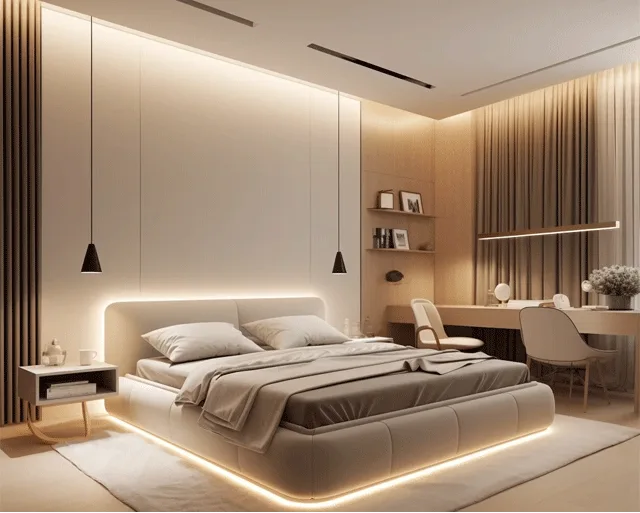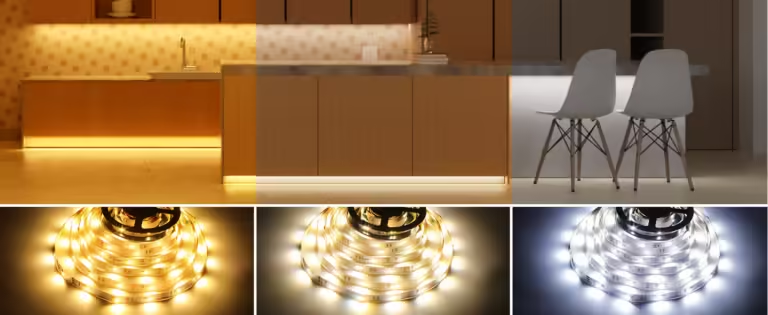Les lampes à LED tri-proof, conçues pour être imperméables, résistantes à la poussière et à la corrosion, sont devenues essentielles pour des environnements tels que les usines, les entrepôts, les parkings, les tunnels et les installations de transformation des aliments. Leur construction robuste garantit des performances d'éclairage stables même dans des conditions difficiles. Cependant, la sélection du mauvais type de lampe tri-proof LED peut entraîner une maintenance coûteuse, une luminosité inadéquate, une durée de vie réduite ou une consommation électrique inutile. Pour obtenir des performances optimales et une fiabilité à long terme, il est important de choisir un appareil qui correspond aux exigences spécifiques de chaque installation. Ce guide explique comment sélectionner la bonne lumière tri-professionnelle LED en fonction de la cote IP, de la puissance et du type, ce qui vous aide à faire le choix d'éclairage le plus efficace et le plus durable pour tout espace industriel ou commercial.
comprendre ce qu'est un Lumière tri-proof LED IS et ses fonctions principales
Le terme « tri-proof » fait référence à trois caractéristiques essentielles de protection : imperméable, anti-poussière et résistante à la corrosion. Une lampe tri-proof à LED est spécialement conçue pour résister à l'humidité, aux particules de poussière et aux vapeurs chimiques qui peuvent endommager les appareils d'éclairage conventionnels. Sa conception étanche avec un boîtier durable et des joints en silicone empêche l'infiltration d'eau et l'accumulation de poussière, ce qui le rend idéal pour les environnements exigeants tels que les usines, les tunnels ou les aires de stationnement.
Au-delà de la protection, la fonction principale d'une lampe tri-professionnelle à LED est de fournir un éclairage constant et économe en énergie dans les zones exposées à l'humidité, à la saleté ou à la corrosion. Avec une efficacité lumineuse élevée et une longue durée de vie, il garantit des performances fiables et une fréquence de maintenance réduite, aidant ainsi à maintenir la productivité et la sécurité dans les espaces industriels et commerciaux.
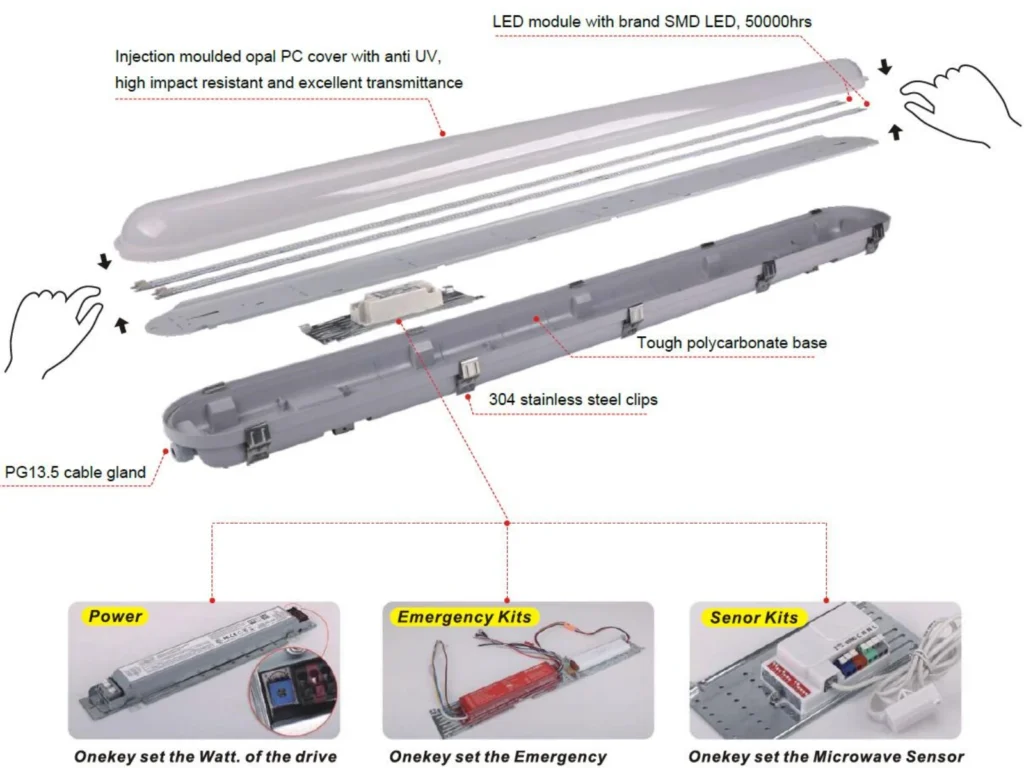
Indice de protection IP : de quelle imperméabilité et anti-poussière avez-vous vraiment besoin ?
Qu'est-ce que la cote IP ?
La cote IP (protection de la pénétration) mesure la qualité de la résistance à la poussière et à l'intrusion d'eau. Il se compose de deux chiffres : le premier indique une protection contre les solides (comme la poussière) et le second montre une protection contre les liquides. Les valeurs nominales de lumière tri-proof à LED sont IP65, qui résiste aux jets d'eau et à la poussière à basse pression; IP66, qui offre une protection contre l'eau plus forte; et l'IP69K, le plus haut niveau, conçu pour supporter un nettoyage à haute température et à haute pression dans des environnements tels que les usines de transformation des aliments.
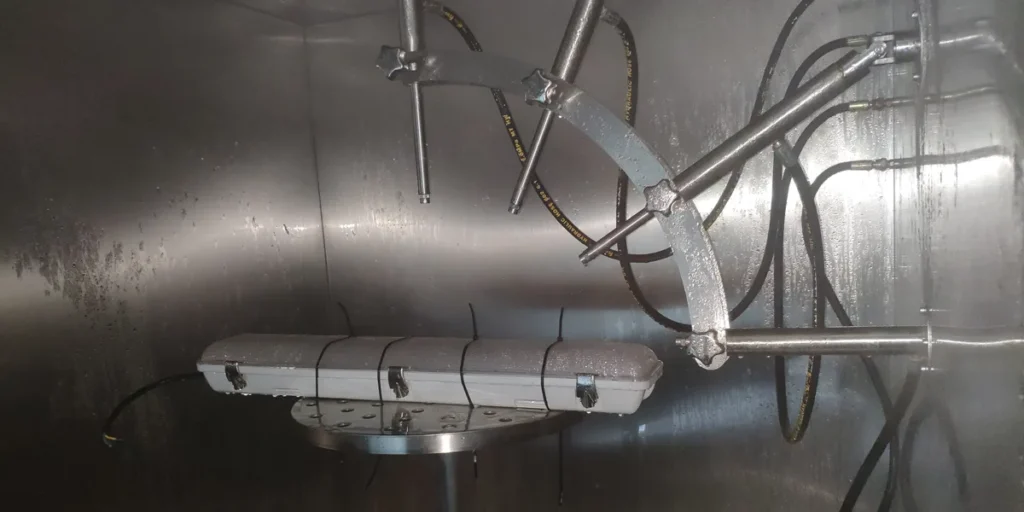
Défis d'achat courants
L'un des plus grands défis lors de la sélection d'une lampe tri-proof à LED est de déterminer quelle cote IP est vraiment nécessaire. Une évaluation trop basse peut entraîner une défaillance du produit, une corrosion ou une maintenance fréquente, tandis que le choix d'un niveau IP inutilement élevé peut augmenter les coûts d'achat sans ajouter de valeur réelle. L'équilibre entre le niveau de protection et l'environnement du projet est la clé d'un éclairage rentable.
Classements IP recommandés pour différentes applications
En général, les zones sèches intérieures peuvent uniquement nécessiter une protection IP65, tandis que les environnements humides ou extérieurs nécessitent des cotes plus élevées. Le tableau ci-dessous résume les applications typiques et les niveaux IP appropriés :
| Application | Indice IP recommandé |
| Entrepôt / Garage | IP65 |
| Tunnel / zone de lavage de voiture | IP66 |
| installation de transformation des aliments | IP69K |
| Site industriel extérieur | IP66–IP69K |
Puissance et efficacité lumineuse : équilibre entre puissance et performance
Wattage — Choisir la bonne puissance de sortie
De nombreux utilisateurs ne savent pas comment sélectionner la puissance appropriée pour leurs lampes tri-proof à LED. Le niveau de puissance correct dépend de plusieurs facteurs, notamment la hauteur d'installation, la zone de couverture et la luminosité requise. Par exemple, un luminaire de 40 W peut être suffisant pour un couloir ou un parking, tandis qu'un entrepôt avec des plafonds plus élevés peut nécessiter 60 W ou plus pour obtenir un éclairage uniforme. Les logiciels de conception d'éclairage tels que Dialux peuvent aider à simuler les conditions réelles du projet, garantissant que chaque zone reçoit la luminosité optimale sans gaspillage d'énergie ni points sombres.
Efficacité — Même puissance mais beaucoup plus lumineux
Il est courant de remarquer que deux lampes tri-protectrices à LED avec la même puissance peuvent avoir des niveaux de luminosité très différents. La clé réside dans l'efficacité lumineuse, mesurée en lumens par watt (lm/w). Un luminaire avec une efficacité lumineuse plus élevée convertit plus de puissance en lumière au lieu de la chaleur, offrant une plus grande luminosité et des économies d'énergie. Le choix des lampes tri-professionnelles à LED à haute efficacité réduit non seulement les factures d'électricité, mais minimise également l'entretien et améliore les performances à long terme dans les environnements industriels et commerciaux.
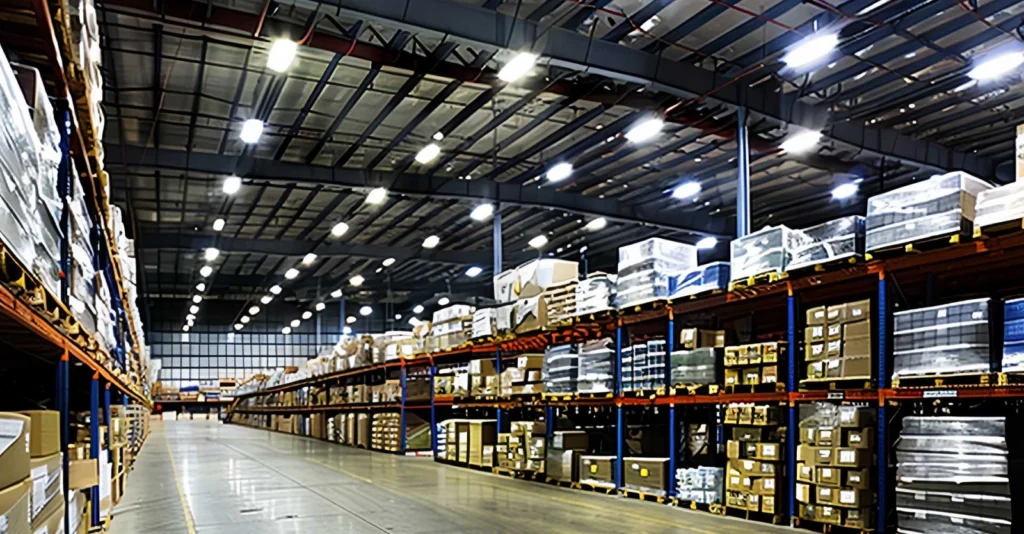
Type : intégré, divisé ou façonné
Le marché propose différents types de lampes tri-protectrices à LED, chacune conçue pour répondre aux différentes exigences environnementales et budgétaires. Bien que leurs fonctions essentielles (imperméabilisation, imperméabilisation et résistance à la corrosion) soient généralement similaires, le choix du type approprié peut faire une grande différence dans la commodité, la durabilité et les coûts d'entretien.
Lampe tri-proof à LED intégrée
Une lampe tri-proof intégrée est dotée d'une structure entièrement scellée où les puces, le conducteur et le boîtier LED sont combinés en une seule unité. Cette conception offre une protection supérieure contre l'humidité et la poussière, garantissant des performances fiables dans des conditions difficiles. Les modèles intégrés sont idéaux pour les environnements tels que les stations de lavage de voitures, les chambres froides ou les tunnels, où une exposition constante à l'humidité et aux changements de température nécessite une durabilité maximale.
Lampe tri-proof à LED split
Une lampe tri-proof de type split sépare le boîtier et la source de lumière interne, qui peut être un tube LED remplaçable ou un module linéaire. Cette structure permet une maintenance plus facile et des coûts de remplacement plus faibles lorsqu'un composant tombe en panne. Bien que son niveau d'étanchéité soit légèrement inférieur au type intégré, il offre une solution plus rentable pour des applications telles que les ateliers, les entrepôts ou les parkings, où les conditions sont moins extrêmes mais la fiabilité est toujours essentielle.
Lumière tri-professionnelle LED en forme ou ronde
Pour les projets nécessitant une apparence distinctive ou une distribution de lumière spécifique, des lampes tri-protectrices, telles que des lampes à LED rondes, sont souvent utilisées. Leur conception unique s'adapte aux fermes d'élevage, aux usines alimentaires ou aux zones industrielles décoratives, où l'esthétique et la performance sont importantes. Ces lampes allient protection et apparence élégante, élargissant la gamme d'applications tri-proof au-delà des conceptions linéaires standard.
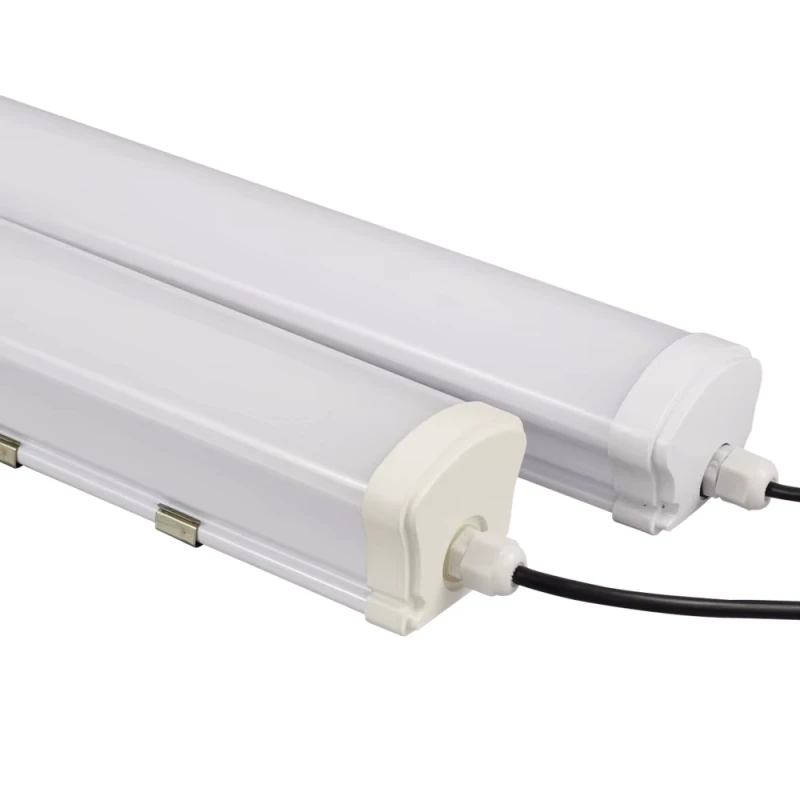
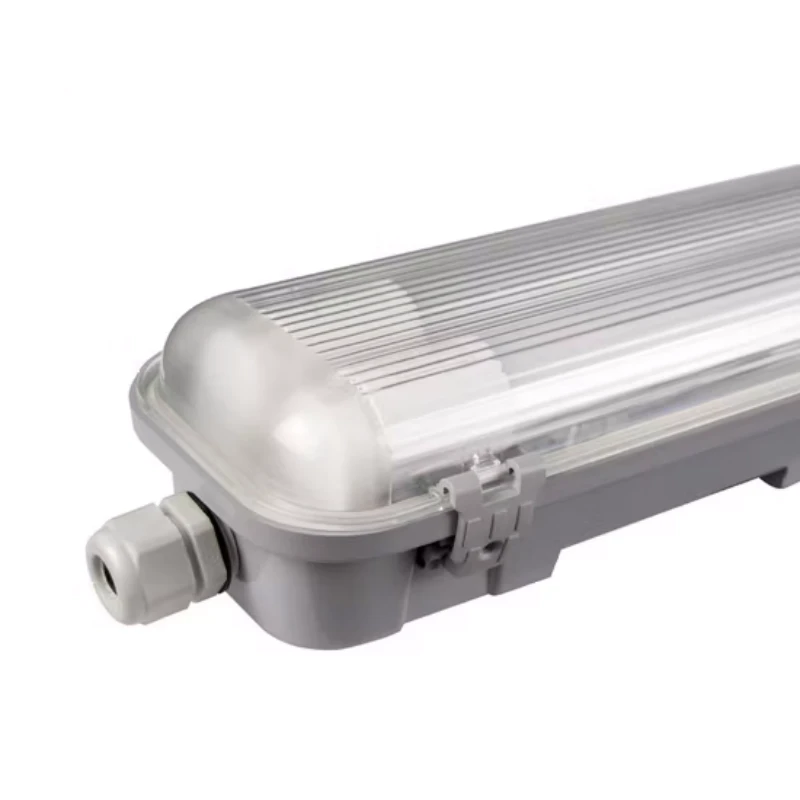
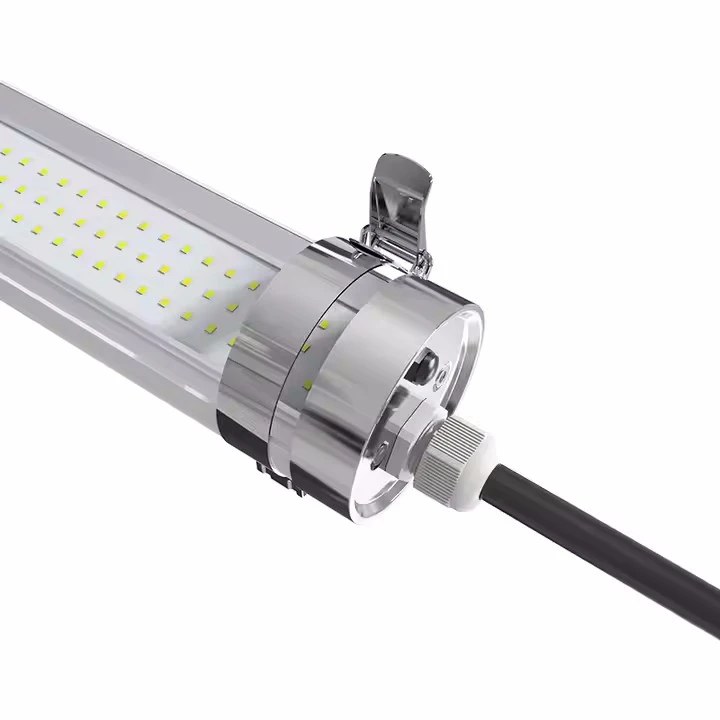
Autres facteurs clés : matériau, température de couleur, méthode d'installation et flexibilité
Matériau : Le boîtier en aluminium offre une meilleure dissipation de la chaleur et une durée de vie plus longue, tandis que les matériaux PC ou ABS offrent un poids plus léger et un coût inférieur.
Température de couleur : Le blanc neutre de 4000K convient aux zones de travail, tandis que 5000-6500K offre une luminosité plus élevée pour les espaces industriels ou extérieurs.
Méthode d'installation : Les éclairages tri-proof à LED peuvent être montés en surface, suspendus ou liant, selon la hauteur et la disposition du plafond.
Flexibilité d'installation : Des conceptions modulaires et des connecteurs rapides simplifient le câblage (chaîne de marguerite), ce qui facilite l'installation ou le remplacement des éclairages dans des projets à grande échelle.
Conclusion
Le choix de la bonne lampe tri-professionnelle LED nécessite une attention particulière au niveau de la norme IP, de la puissance, de la taille et du type pour assurer la durabilité, l'efficacité énergétique et les performances d'éclairage optimales. Le bon luminaire réduit non seulement les coûts de maintenance et d'énergie, mais garantit également une fiabilité à long terme dans des environnements industriels ou commerciaux exigeants.
SignliteLED Se concentre sur la fabrication de lampes tri-professionnelles LED de haute qualité conçues pour les conditions difficiles. Nous fournissons des solutions d'éclairage personnalisées en fonction des exigences de votre projet, notamment des rapports de simulation Dialux, des spectres optiques sur mesure et des conseils d'installation professionnels. Que ce soit pour les usines, les entrepôts ou les installations de stockage frigorifique, SignLiteled fournit un éclairage tri-professionnel durable et efficace qui répond aux normes internationales. Contactez-nous dès aujourd'hui pour discuter des besoins de votre projet.
